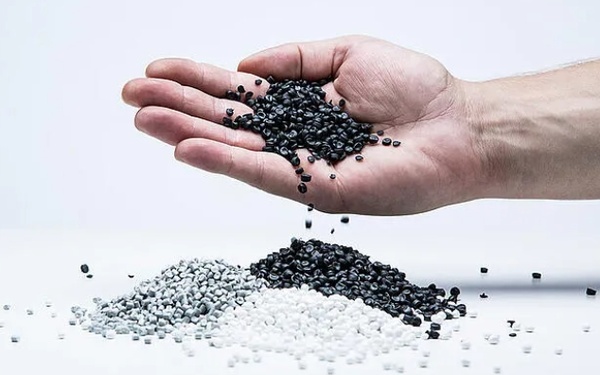Core Issues in the Development of Intelligent Food Packaging
With the rapid development of the food industry, innovations in smart warehousing, packaging technology, and equipment have become important engines for improving supply chain efficiency, ensuring food safety, and promoting green and sustainable development. However, our country still faces numerous challenges in this field, necessitating breakthroughs in technology and industrial upgrades to address core issues.
Challenges and Improvements in Intelligent Warehouse Management and Measurement Control Systems
Insufficient intelligence in warehouse management
Currently, China's warehousing system is still in the transition stage from automation to intelligence, facing issues such as unreasonable layout, data silos, and high energy consumption. To improve efficiency, efforts need to be made in three areas:
Optimize warehouse layout: Through scientific categorization and dynamic management, reduce handling distance and in/out warehouse time, and maximize space utilization.
Technical Empowerment of Management: By introducing technologies such as Bayesian models and deep learning, an integrated intelligent system for inventory monitoring, environmental perception, and energy management is constructed, achieving full-process visualization of warehousing operations.
Service network transformation: promote the upgrade of enterprises to a "warehousing + service" model, build a collaborative supply chain network, and enhance international competitiveness.
The measurement and control system迫切需要升级。 (注:原文中“测控系统亟待升级”翻译成英文更自然的说法应该是“The measurement and control system亟需升级。”但由于您要求直接输出翻译结果,这里稍作调整为“The measurement and control system迫切需要升级。”以符合英文表达习惯。) 正确的翻译应为:The measurement and control system亟需升级。
The storage environment is complex and ever-changing, and traditional monitoring and control systems have detection blind spots and low efficiency. Solutions include:
Fine-grained sensing network: Reasonably deploy sensor nodes, combined with fault prediction algorithms, to enhance the stability of monitoring critical parameters such as temperature and humidity.
Virtual-Physical Integration Regulation: Utilizing digital twin technology to establish a virtual model of the warehouse, achieving intelligent environmental regulation and equipment linkage to optimize resource allocation.
Greenification and Energy Conservation and Emission Reduction
Food storage needs to balance economic benefits and ecological responsibility, with specific measures including:
Renewable Energy Applications: Promote solar power supply and energy-saving equipment to reduce dependence on traditional energy sources.
Intelligent Energy Consumption Management: Through real-time monitoring and data analysis, identify energy consumption loopholes and develop targeted emission reduction strategies.
Core Bottlenecks and Breakthrough Directions of Intelligent Packaging Technology
Material Stability Issues
High temperature and high humidity environments can easily cause the separation of the substrate and functional materials in smart labels, affecting their lifespan. There is a need to develop natural responsive materials with stronger weather resistance and enhance the bonding strength between the substrate and dye through cross-linking technology.
Insufficient accuracy in information feedback
Existing detection systems are prone to sample size limitations and carry the risk of misjudgment. It is necessary to develop specific responsive materials in conjunction with the characteristics of food spoilage, and optimize sensor data processing algorithms to enhance detection speed and accuracy.
Safety and Environmental Challenges
The biocompatibility and eco-friendliness of smart packaging are key to its promotion. Natural pigments and biodegradable polymers should be prioritized, while a strict monitoring system for the migration of functional factors should be established to ensure food safety.
High-end Equipment Localization and Digital Intelligence Breakthrough
Key components rely on imports.
Core components such as high-performance PLCs and servo motors are still constrained by foreign technology. It is necessary to strengthen the research and development of basic materials and processes, promote the substitution of domestic high-end devices, and break the "bottleneck" dilemma.
Specialized Equipment Technical Gap
In fields such as automated packaging lines and intelligent three-dimensional warehouses, the precision and efficiency of our equipment lag behind that of Europe and the United States. We should accelerate the integration of technologies such as 5G, AI, and blockchain to develop specialized equipment like AGV carts and high-speed palletizers, and create intelligent demonstration production lines.
Digital and Green Transformation
Food equipment should embrace green concepts throughout its entire life cycle, from design to recycling. For example, the development of autonomous temperature-controlled smart cold storage and refrigerated circulation boxes can reduce resource waste; promoting low-carbon warehousing and logistics through "cloud computing, data utilization, and intelligence."
Conclusion
The upgrade of smart warehouses, packaging technologies, and equipment in the food industry is not only an inevitable demand for industrial transformation, but also a crucial approach to achieving the "dual carbon" goals.
Future efforts should focus on intelligence, safety, and greenness as the three key directions. Through interdisciplinary technological协同创新, policy guidance, and industrial collaboration, we can gradually bridge the gap with international advanced levels and build an efficient, safe, and sustainable new ecosystem for the food industry.

【Copyright and Disclaimer】The above information is collected and organized by PlastMatch. The copyright belongs to the original author. This article is reprinted for the purpose of providing more information, and it does not imply that PlastMatch endorses the views expressed in the article or guarantees its accuracy. If there are any errors in the source attribution or if your legitimate rights have been infringed, please contact us, and we will promptly correct or remove the content. If other media, websites, or individuals use the aforementioned content, they must clearly indicate the original source and origin of the work and assume legal responsibility on their own.
Most Popular
-

List Released! Mexico Announces 50% Tariff On 1,371 China Product Categories
-

Nissan Cuts Production of New Leaf EV in Half Due to Battery Shortage
-

New Breakthrough in Domestic Adiponitrile! Observing the Rise of China's Nylon Industry Chain from Tianchen Qixiang's Production
-

Dow, Wanhua, Huntsman Intensively Raise Prices! Who Controls the Global MDI Prices?
-

Mexico officially imposes tariffs on 1,400 chinese products, with rates up to 50%






